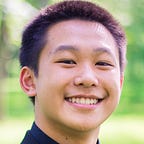Impossible Figures
My vision for the future of artificial intelligence explained by impossible figures. This is a slightly edited version of the short piece that I wrote a few years ago.
“
I preface this with the realization that I do not have these ideas. Rather, these ideas have me.
“impossible figures” was the search query, and Google Images provided me with a plethora of mind-boggling figures. I picked some of the classics to draw, like the impossible triangle, which is actually a tribar, and the Penrose stairs, which indefinitely go up. or do they go down? But I spent most of my illustration time drawing what I called “The Impossible Snowflake,” an impossible triangle on steroids. It resembled a fractal, growing infinitely further from the world of reason. Bereft of any substantial facts or information, I took a philosophical lens to the meaning behind the geometric anomalies that still intrigue me to this day.
Impossible figures — those two-dimensional optical illusions designed for human perception of three-dimensional existence, but clearly illogical — have fascinated me since the day I borrowed “The Great Book of Optical Illusions” from my public library. This collection of reason-defying illusions and impossible shapes germinated a seed in my mind that I continue to cultivate. This often leads me to extended periods of deep thought, completely engrossed in the true nature of what is unattainable.
Isn’t something impossible that which cannot be achieved? But how can it be proven that something cannot be accomplished? Surely if it is tried over and over again without success we can attribute the label of “impossible” to it? Yet under the tenet that this is ideally possible and realistically impossible synchronously, the idea of an infinite number of attempts arises. As the ideal seeks to realize potential, infinite attempts will indubitably result in success. At the same time, the real seeks to disregard the probable, so infinite trials will bear no accomplishment. The pursuit of the impossible is the purest bifurcation of Being into what is, and what isn’t.
But any confusion on what is and what isn’t no longer lies in the abstract world. The real world is changing, and not in any manner that it has in the past millennia. For the first time, humanity will no longer be the sole entity with the telos of reason. What makes humans unique from the animal kingdom-our ability to reason-does not set us apart from artificial intelligence.
The past can, however, be used to justify the inevitable arrival of sentient machinery. For as long as mankind has reasoned, what was once regarded as unattainable was proven doable. The natural innovation that humans possess has created technology that was unimaginable, time and time again. The lightbulb, the automobile, and air travel were all deemed utterly inconceivable by experts just years before their respective debuts. It’s all possible as human evolution endlessly pursues the impossible.
The same can be said for the increasing speculation of artificial intelligence. Having been dubbed “impossible,” its continued advancements makes the capacity for sentient robots ever-clearer.
What can we do?
Maybe it’s not a hopeless “What can we do?” that we should be asking. Perhaps it’s more of a “What will we do?” In our attempt to attain the impossible, we are only halted temporarily by the concept of infinity. It is a blockade, a barrier between us and our telos. But just for a fleeting moment. Its realized potential is what we seek. Infinite failures hold infinite possibilities, especially in the Being of Reason.
It’s those impossible figures that simultaneously define human reason and kick logic to the curb. And it’s human nature, or even sentient nature, to move towards that which could be.
Knowing that the impossible is always possible, I am inspired to intertwine the world of human potential with the birth of emotionally aware robots-and the necessary rise of a new bioethical philosophy that is paramount for me to create.
What will we draw in our Great Book of Optical Illusions?
”
